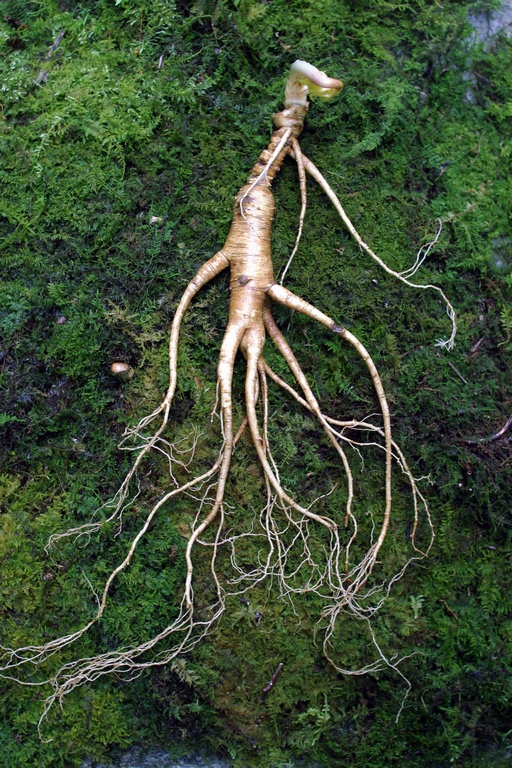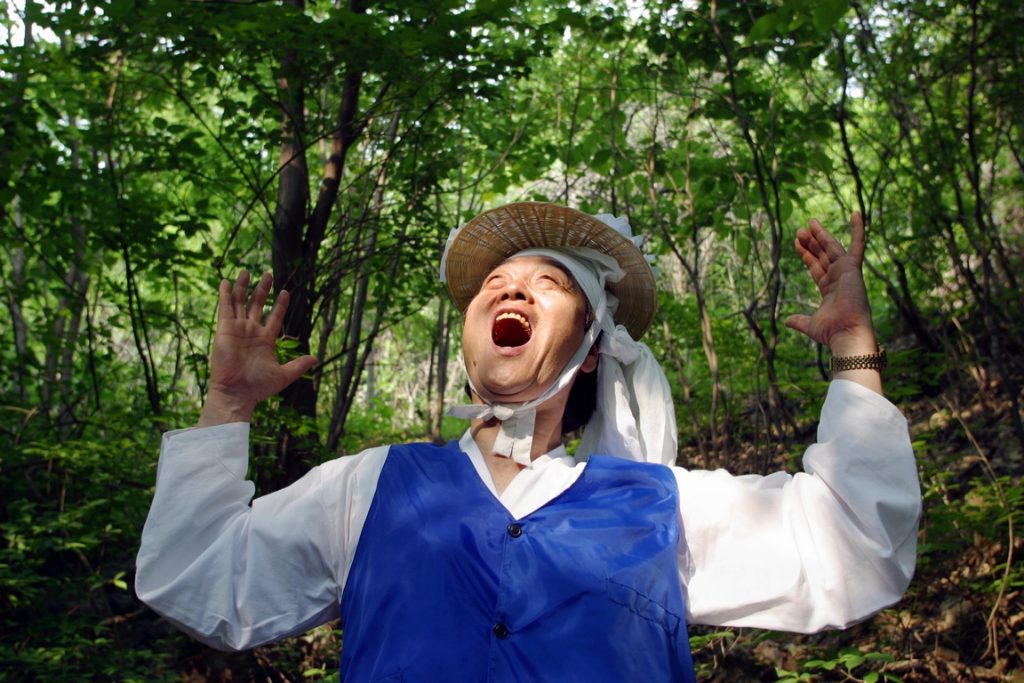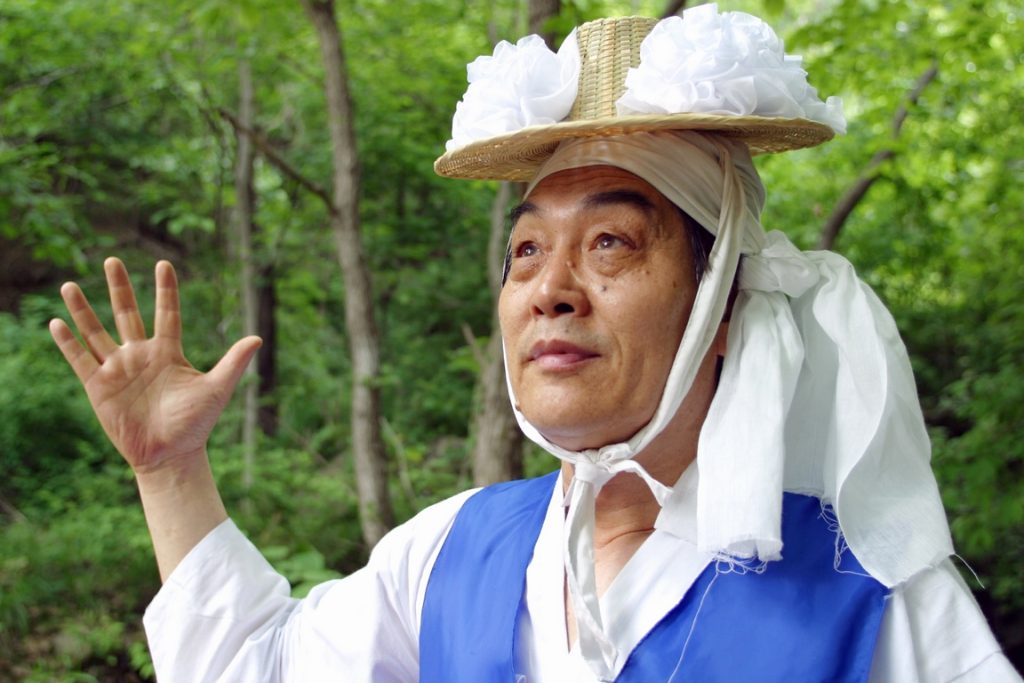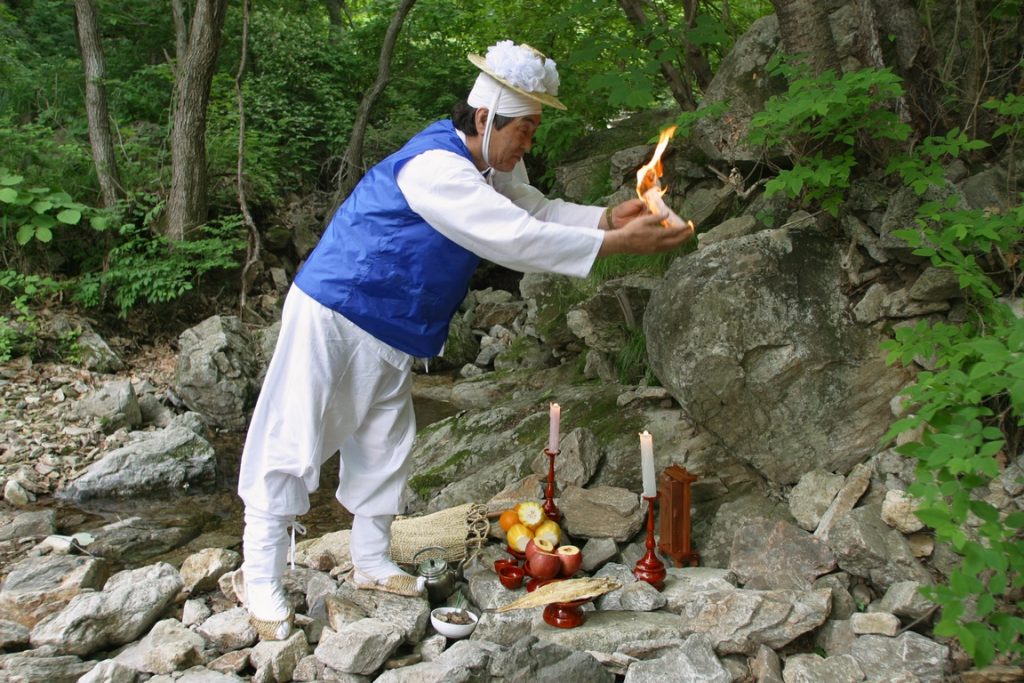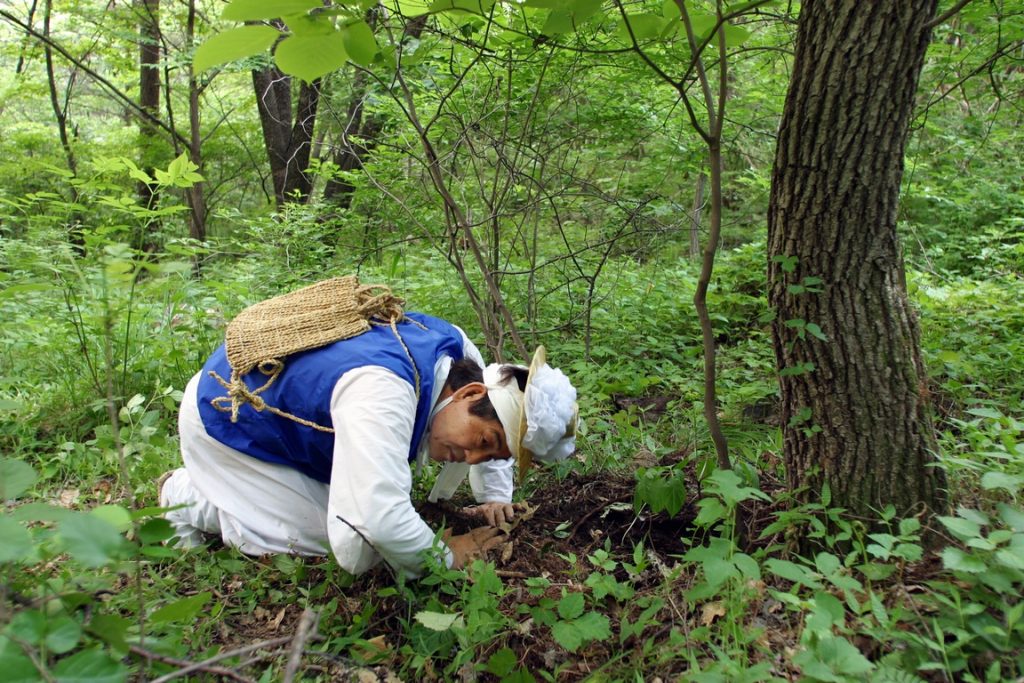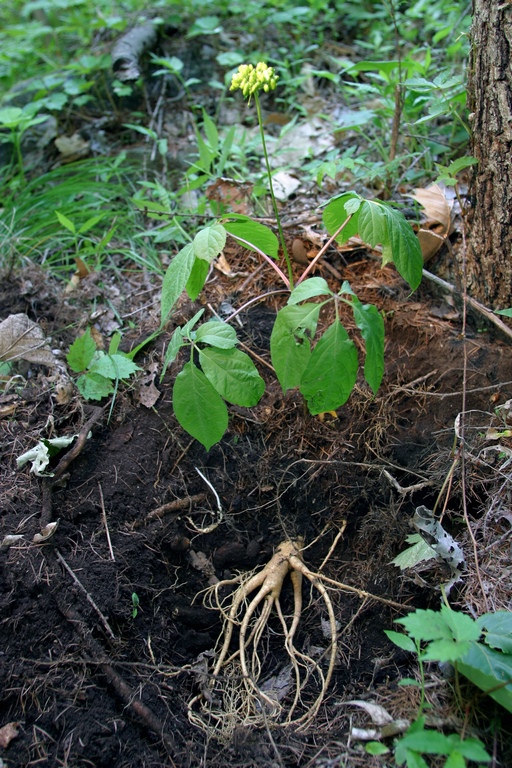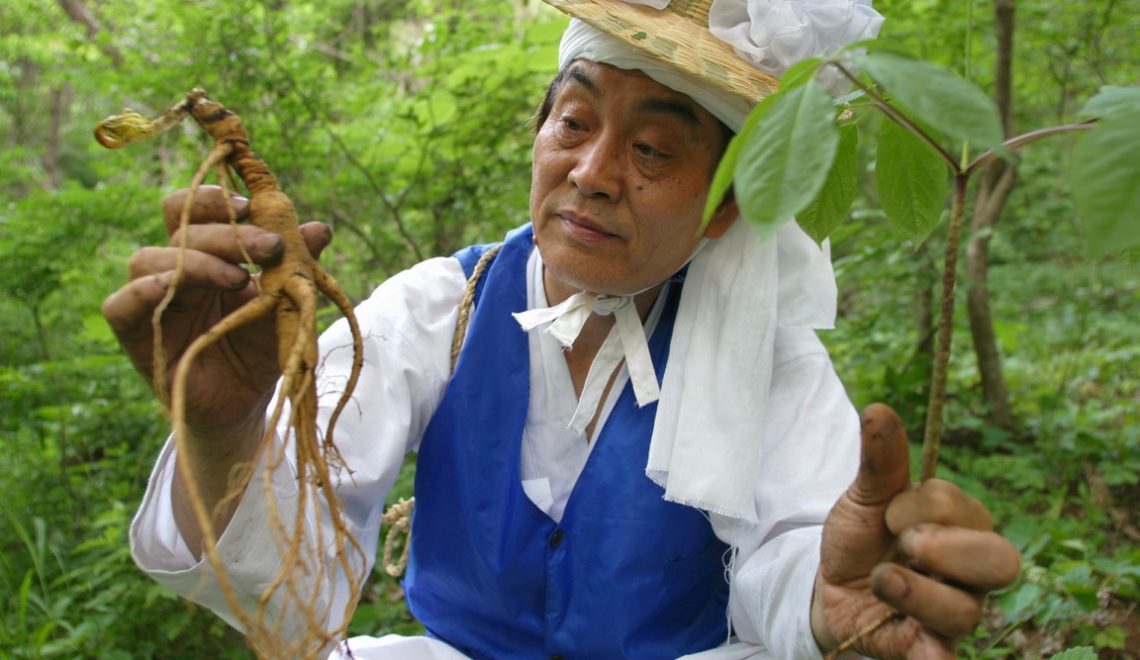
It was in the Sôrak mountains in South Korea that we met Park Dong Jun, a member of the Simmani brotherhood of wild ginseng seekers. Photographer Pierre Bessard had the privilege of following him on his quest for this now extremely rare root. A plant so sacred and precious that only the "chosen" of Sansin (or Sanshin), the mountain spirit, can find her after dreamlike visions and ritual purification.
In search of the wonderful root
In Korea, wild ginseng is called sansamwhich means "mountain ginseng". Ginseng, whatever the variety, is called insamwhich translates as man-plant. This wild ginseng is found in the forests of the steep mountains in the north of the peninsula, at an altitude of around 1,000 meters. Tradition has it that this sansam (1) is by far the most precious of all remedies. Twenty, thirty, fifty or even more years spent in humus-rich soils on the steps of heaven allow ginseng to build up its mineral and nutrient content, giving it almost miraculous properties. It has to be said that the mountains, which cover around 70% of Korea, are a fairly impassable world where shamanic myths and customs of Ural-Altaic origin have long been preserved. It is also the realm of the gods and the dead, the cradle of the legend that founded the nation (2).
As a result of this particular environment, wild ginseng is reputed to have a sovereign medicinal effectiveness in strengthening the immune system and in many illnesses such as hypertension, heart disease, diabetes, cancer, etc., as well as in reawakening male vigour, even in old age.
Korean mandrake
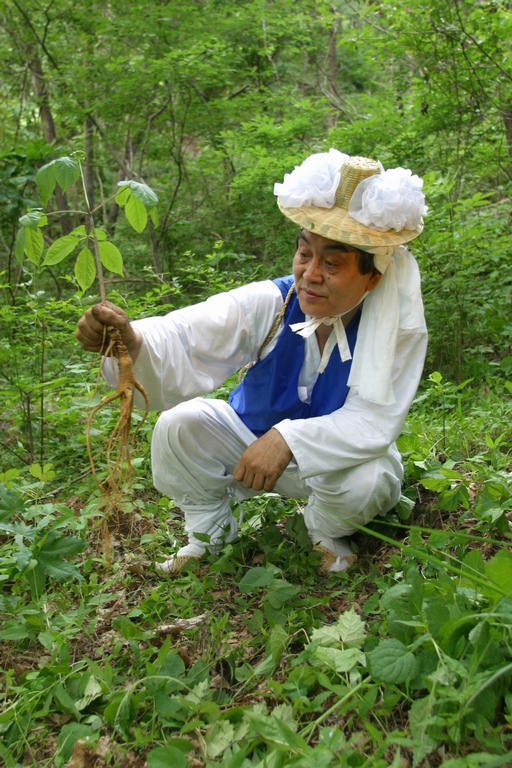
There are a plethora of accounts of extraordinary cures using this rhizome, whose use was initially reserved for the emperor, a treasure that the Korean court also gave as gifts to foreign heads of state. Like the mandrake root, its anthropomorphic form is the source of all kinds of beliefs. But it also has very real effects. Often compared to a woman crossing her legs, but with yang energy, the sansam is simply called sim by the simmanis. A plant so unique that the lives of those who collect it are governed by very strict rules and taboos. As I'm a woman, with yin energy, it's out of the question for me to go with Park Dong Jun in search of the simmani plant, sansam, because the spirit of the mountain would be unhappy and he would be the one which gives the sim ".
But Sansin doesn't give it to just anyone. Even if today, with the advent of tourism, many people claim to be simmanis even though they don't respect the rites, there are only a dozen or so genuine seekers of sim in Korea.
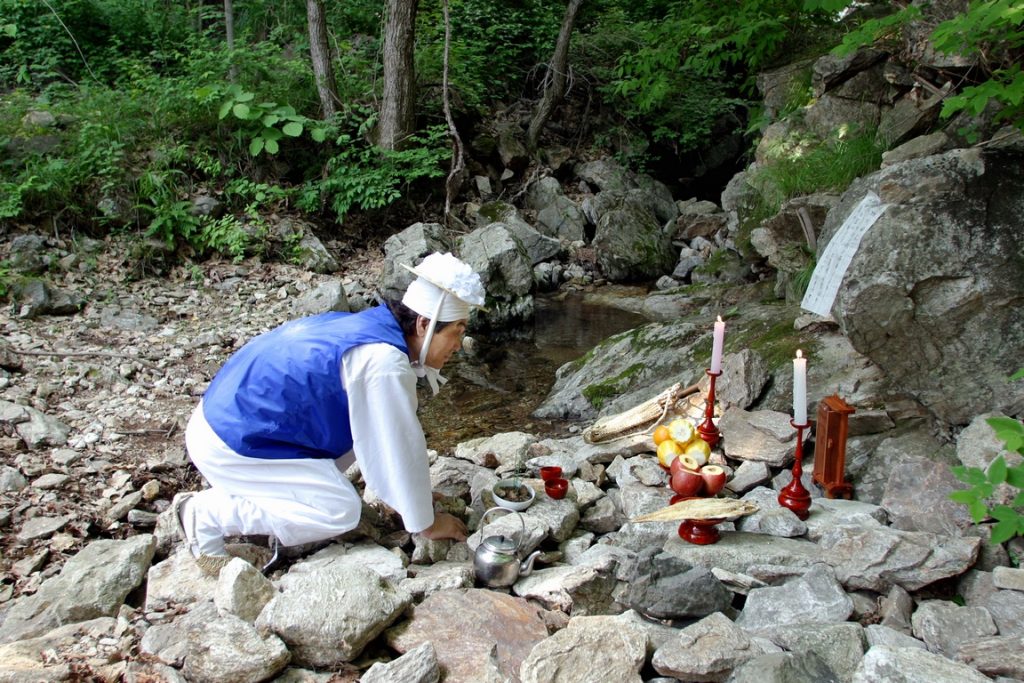
Pak Dong has been a simmani for thirty years. Outside the harvesting season, which runs from June to October, he works on his small farm. He tells us that he has been preparing for this quest for a long time, and has prayed Sansin to bring him luck. In the spring, he devoutly went into the mountains to visit places where sims They also make offerings at the many altars that dot the wilderness paths. Several weeks before venturing into the god's territories, the simmani will write down all his dreams, sometimes discussing them with other simmanis in an attempt to decipher the meaning of the messages that the gods have sent him in his dreams. For example, a significant dream (dream of an old man, a snake, a specific place, a dead person, etc.) in the month of January may suggest that the researcher will find a way to decipher the message sent to him by the gods. sim 6 months later. A dream in February will be valid for August, and so on. For anthropologists Choi Young-Hee and Pierre Erny (3) "An unfortunate event in a dream heralds a happy event" in reality. This is why a dream about a corpse is the best a simmani can receive. The deceased represents the sim which is going to be "killed". "Transgression of the forbidden is thus permitted in dream life, which certainly has a cathartic and balancing effect for men so surrounded by rules and taboos",anthropologists note. Despite the influence of foreign religions (Confucianism, Buddhism, Christianity, etc.), Korea has inherited shamanic customs that explain the worship of spirits or local divinities. "There is a surprising continuity between night life and day life. The dream offers the simmani the opportunity to visit the world hidden behind the visible stage of reality. The dream world, with its specific space and time, thus appears as a unique zone where communication between divinity and humanity becomes possible", add our authors.
Shamanic ritual or kut
To determine the exact date of the search, a shaman is called in to perform a ritual kut. But no-one other than the simmani (or his colleagues) must be aware of the date of the expedition. Throughout the time leading up to his departure, the simmani will lead an ascetic life: total abstinence, as a loss of semen leads to a lack of yang energy; no alcohol; no television; no attending funerals and no meeting the bereaved members of the family of the deceased, or entering a house where a baby has just been born, in order to keep away from the vicissitudes of the world. They must also abstain from certain foods, such as chicken, eggs, fish, dog meat and foods offered during the kut to the deities of the shamanic pantheon. If a prohibition is broken, the search is postponed for between one and several months, depending on the seriousness of the transgression, to allow time for re-purification.
Departure for the mountains
Dressed entirely in white (vegan spirits are associated with the sky and the colour white), in a blue sleeveless jacket, wearing a white cloth headdress and a straw hat secured by a white cotton strap tied under the chin, with a jute bag slung over the shoulder filled with offerings, the seeker sets off on a walk of several hours, sometimes several days, along a stony path that is barely visible amidst the vegetation. Sometimes the simmanis set off in groups, always in odd numbers, to help each other when they have to dig up the famous root. You have to advance in single file and in silence. At the first stream encountered, the simmani performs ablutions to purify himself.
Continuing his peregrination and arriving near a chosen rock, usually close to a stream, the simmani spreads out his offerings (oranges, melons, rice, dried fish), spreads on the rock the soji, white sheets of paper. He then lights two candles. And then implores the spirit of the mountain to help him find the sim, to protect him during his search, and to express his respect for the mountain. He then burns the ritual paper and utters incantations to the spirits of the forest and the mountain, raising his arms to the sky while spinning around in a sort of dance.
When the first ritual is over, he leaves the offerings in place, bows deeply and sets off again, guided by his intuition and the messages he has received in his dreams. Sometimes, however, the mountain expresses a refusal. The most significant of these are encountering a woman in the forest (although it is rare for them to venture out alone), or a snake. These are two very bad omens that force you to interrupt your search. Nothing of the sort happened to our simmani this time. Just a brief encounter with an old man resting on a rock, to whom he doesn't say a word and to whom he turns his back for fear of being 'contaminated' by someone in a state of impurity.
A few hours later, after more purification in the river, Park Dong Jun stopped at the foot of a tree. He had spotted the root of life. But before searching, he thanked the spirits for their help and prostrated himself before it. Then he kneels down and digs up the plant with his bare hands. No tool must touch the root. Nor should they injure it, as this could render it unsuitable. The root is completely uncovered and presented in its entirety. He then places a few coins in the hole before closing it. A symbolic exchange that precedes the rite of thanks he will perform before leaving the mountain.
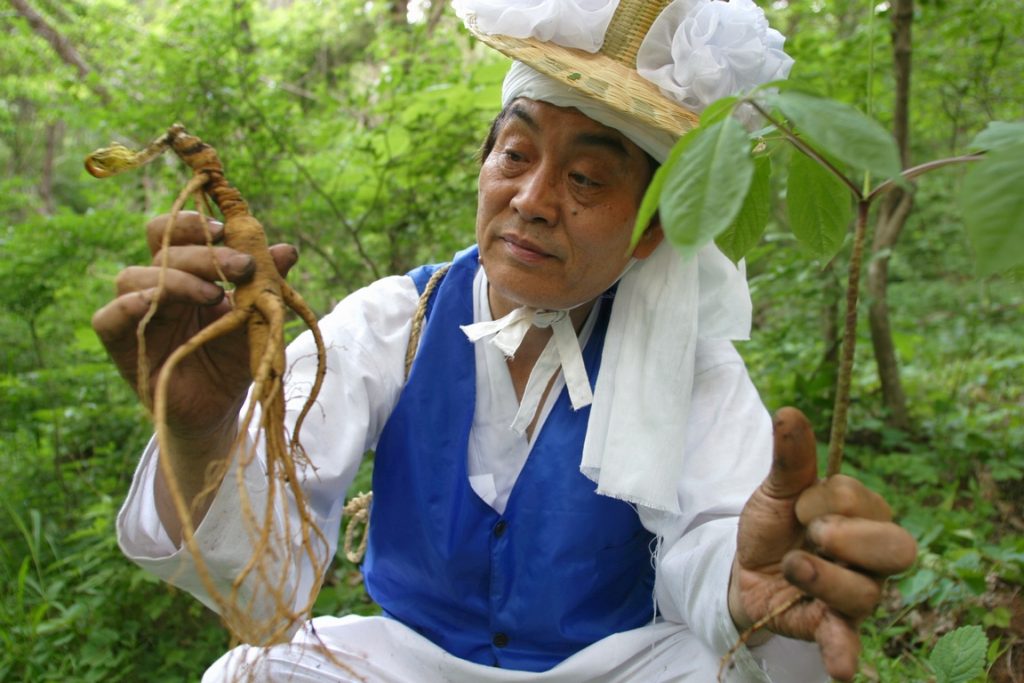
Ginseng: various qualities
1 - There are different qualities of Ginseng, from the most mediocre to the extremely rare wild Ginseng, which is also found in the Paektu mountains in North Korea and their extension in China. It has become rare there as a result of uncontrolled and excessive harvesting. These days, only the wealthy can afford to buy wild ginseng root. (In 2010, a medium-sized root fetched around €300,000).
The best quality ginseng at an affordable price in Europe is the 'semi-wild' variety, red ginseng, produced organically. This method of cultivation preserves the essential qualities of wild ginseng, unlike extensively cultivated ginseng, which uses numerous phytosanitary products that are just as harmful to the environment as they are to our health. Korean ginseng is renowned for its quality, due in part to the age of the root, which must be harvested at least 6 years after sowing. The active ingredient in ginseng, ginsenoside, increases with the age of the plant. This means that the older the ginseng, the more it contains. Wild ginseng is mentioned in the ancient book of Oriental medicine « Shang Han Lun », which was written by the physician Zhang Zhongjing (150-219) during the late Han period, around 200 BC.
2 - In Korea, the mountain is a sacred place, an intermediary between eternity and ephemeral human life. According to the history of the Three Kingdoms, compiled by the monk Iryôn in the 13th century, Korea was created on a mountain in 2333 BC, under the name of Chosôn, the land of the Morning-Light and not the Morning-Light as Westerners have mistranslated it, the exact literal name being "the land of fresh and clear mornings". This idealisation of the mountain and its initiatory function is still very much alive in contemporary society.
3 - Paper: Wild ginseng researchers in Korea, Anthropos 90.1995
Text: Brigitte Postel
Photos: Pierre Bessard
This article was also published on Inexploré website https://inexplore.inrees.com/rubriques/reportages

